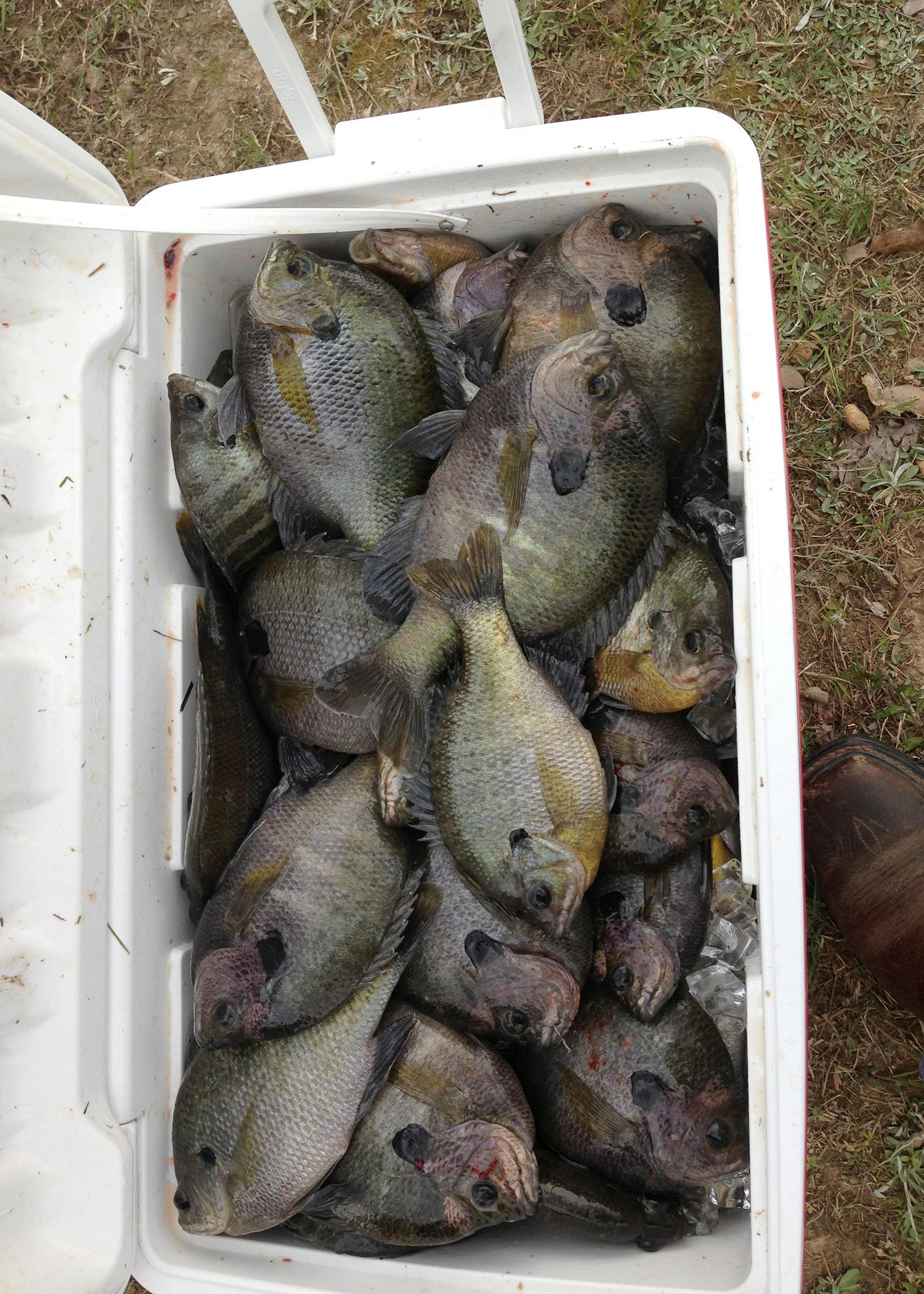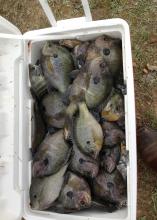Information Possibly Outdated
The information presented on this page was originally released on May 1, 2015. It may not be outdated, but please search our site for more current information. If you plan to quote or reference this information in a publication, please check with the Extension specialist or author before proceeding.
Do I need to fertilize my lake or not?
RAYMOND, Miss. -- One of the most common questions people ask about lakes and ponds is whether they need to apply fertilizer to promote fish population growth.
“Do I have to fertilize my lake and if so, what should I use and how much of it should be used?” I get these questions every year, and my response typically is, “How much fishing pressure does it receive? Are there any weed/invasive plant issues?” If there are just a few folks using the lake and not much fishing pressure, fertilizer may not be necessary.
In a lake, and everywhere else on Earth, there is a natural carrying capacity, or limit to the number of individuals that can exist before they exhaust resources and cause environmental degradation. If we identify what that population or level is, we can make sure fishing and fish removal occur each year to keep the population below that level. With this knowledge and management, we may not have to fertilize the lake in order to keep fish populations at desired levels for fishing.
If the fishing pressure changes for some reason -- for example, a fishing club is started and increases the pressure beyond the lake’s natural capacity -- then a fertilization program may be needed. Also, if there are weed or invasive plant issues, these problems should be addressed before starting a fertilizer program. There are many ponds in Mississippi that have never been fertilized and probably never will be. If the landowner is satisfied with the pond’s productivity, no fertilizer is needed.
Before applying fertilizer, check the water’s chemistry. Check the water alkalinity, which is the buffering ability of the body of water to pH changes. Fluctuations in water pH result in lower efficiency rates of applied fertilizer, thus reduced potential productivity in a lake. The other chemistry to check is the soil acidity level. Low soil pH can lead to lower water quality, reduced efficiency of fertilizer and reduced productivity. Once you determine these levels and make any necessary adjustments to the soil pH and water alkalinity, we can discuss available fertilizers and their rates.
One big caution I always try to convey to lake owners is that they must take a fertilizer program seriously. Through fertilization programs, we increase fish production levels in a lake, or its carrying capacity. If we start the fertilization program, we have to be committed to following through.
If the lake owner decides to discontinue the program after a few years, the carrying capacity will be reduced to the natural level again. This process will lead to an unhealthy fish population and possibly even fish deaths in the lake.
Dispensing with the fertilizer supplements will reduce the base of the food chain -- plankton, a one-celled organism that absorbs light -- back to a natural level. With fewer of the microscopic plants, the photosynthesis rate in the water is also reduced, thus slowing the production of dissolved oxygen in the lake. Low oxygen levels can cause fish kills.
Increasing plankton, which cause that well-known green color in a lake, is one advantage you will get from fertilizing. Plankton populations reduce the amount of light that penetrates into the lower depths of a lake, slowing the growth of vegetation in deeper water. Some growth of vegetation is good, but overproduction leads to weed growth. In many cases, that weed problem must be dealt with.
If we decide to start increasing our production levels through a fertilizer program, what are our fertilizer options? There are granular products, such as 0-46-0. There are liquids, there are dispersible powders, and there are long-lasting, time-release products on the market. Generally, the easier a product is to apply and the less frequently you need to apply it, the more it will cost per acre. So the owner has decisions to make.
Also, you must read each product’s label closely. Each product has a manufacturer’s rate and application procedure. Please study and follow those labels. If these products are not applied properly, their efficiency is reduced. Your local Extension office should be able to answer questions about applying the products you want to use in your lake.
When do we start fertilizing each year? Normally, we start applying the product when the water temperature reaches at least 60 degrees Fahrenheit. This usually occurs around mid-March in south Mississippi and early April in central and north Mississippi. Fertilizing at the proper time of year will help control those early vegetation issues by shading the bottom of the lake.
Remember, fertilizing a lake is not required, but lake owners need to be committed to continuing nutrient supplements once they start a program. They also need to apply fertilizers at the proper time of year and at the proper rates. Doing these applications the way they are intended will make for potentially great fishing opportunities for lake owners and their guests.

Editor’s Note: Extension Outdoors is a column authored by several different experts in the Mississippi State University Extension Service.




